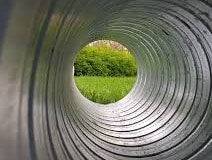The act and result of galvanizing is called galvanizing or galvanizing : it is the application of a metallic layer on another different metal using an electric current .
 The concept comes from the surname of the person who investigated this type of process: the Italian Luigi Galvani (1737-1798). This scientist discovered that, when an electric current is applied to a muscle of a dead animal, it experiences a contraction. Working with metals, Galvani realized that each one's electrical charge is different.
The concept comes from the surname of the person who investigated this type of process: the Italian Luigi Galvani (1737-1798). This scientist discovered that, when an electric current is applied to a muscle of a dead animal, it experiences a contraction. Working with metals, Galvani realized that each one's electrical charge is different.
This Italian physicist and doctor concluded that, by appealing to different electrical charges, it is possible to coat one metal with another. The process , known as galvanizing , is carried out with the intention of protecting a metal.
The most common galvanizing is done by applying a layer of zinc on iron . In this way, the iron is protected since zinc is the material that is exposed to the air and, when it comes into contact with oxygen, it oxidizes. Pipes or pipes, for example, are usually subjected to this galvanizing.
Zinc coating of steel can be carried out in different ways. Hot-dip galvanizing involves placing the steel elements in a crucible of molten zinc. Cold galvanizing, on the other hand, requires the use of a roller , brush or gun to apply the zinc to the steel.
In addition to all of the above, we cannot ignore that cold galvanizing is considered to provide less protection than if hot galvanizing is chosen, which stands out, among other things, for its simplicity and is carried out in three clearly differentiated steps.
Specifically, the hot-dip galvanizing process, which is also known as HDG, requires following these instructions:
-Prepare the surface in question. Specifically, this is done by undertaking, in turn, three phases, which are: caustic cleaning or degreasing; the pickling phase, which consists of removing mill scale and iron oxides, and fluxing. This last step consists of removing any remaining rust and providing a layer of protection.
-Undertake the galvanizing itself. It consists, as we have already pointed out in some way, of introducing the steel into a bath of molten zinc. Specifically, zinc, which must be at least 98% pure, has to be kept between 433º and 455º.
-Carry out the inspection process, which is perhaps the fastest and easiest process of all galvanizing. And it consists of checking the uniformity, thickness and appearance of each of the pieces that have undergone the process in question.
It is important to mention that galvanizing not only improves the protection of the metal that is coated, contributing to the durability of different structures, grilles and pieces of street furniture. It is also used for aesthetic purposes , using layers of gold , silver, bronze, tin or copper.
Among the main advantages that the galvanizing process brings are its enormous durability, which is a truly very versatile task and means that galvanized elements do not have to invest anything in their maintenance.
